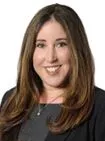The Securing a Strong Retirement Act of 2022 ("SECURE Act 2.0"), which became law as part of the Consolidated Appropriations Act of 2023, builds on the Setting Every Community Up for Retirement Enhancement Act ("SECURE Act"), enacted in December 2019. The SECURE Act 2.0 seeks to further improve workers' long-term retirement security and financial well-being through numerous changes to workplace provided retirement and savings plans that are intended to (i) expand coverage and improve retirement savings; (ii) preserve income; and (iii) simplify and clarify retirement plan rules. From the 359 pages of the SECURE Act 2.0, we provide highlights of the key provisions impacting retirement plans and IRAs.
1. Changes to Contribution Rules
- "Savers" Match for Low-Income Earners. Prior to the SECURE Act 2.0, a participant who was age 18 or older and was neither claimed as a dependent nor a student, could take a tax-credit equal to 50 percent, 20 percent or 10 percent of the contribution made to a 401(k) plan or an IRA, provided that their adjusted gross income ("AGI") was below certain income thresholds (e.g., a 50 percent credit if their AGI was not more than $43,500 for married filing jointly, $32,625 for head of household and $21,750 for all other filers). Beginning in 2027, the Secure Act 2.0 replaces the tax-credit with a matching contribution to be made by the Federal government into the employer's plan for the employee. The contribution will be equal to 50 percent (or less, based on AGI) of the first $2,000 the employee contributed.
2. Changes to Catch-Up Contributions
- Option to Treat Student Loan Repayments as Elective Deferrals for Matching Contributions. Prior to the SECURE Act 2.0, an employee who did not make elective deferrals, Roth contributions or after-tax contributions, to a 401(k) or 403(b) plan, was ineligible for an employer matching contributions. For plan years beginning after Dec. 31, 2023, the SECURE Act 2.0 allows employers to treat an employee's qualified student loan repayment as if it were an elective deferral for purposes of employer matching contributions. For an employer to make matching contributions in respect of an employee's qualified student loan repayments, an employer may rely on an employees' certification that such individual made the loan repayment.
- Option for New Linked Emergency Savings Accounts. Beginning in 2024, the SECURE Act 2.0 permits retirement plans to offer linked "emergency savings accounts" that allow non-highly compensated employees to make Roth contributions in a separate account up to $2,500 (indexed for cost-of-living). Employees can take penalty-free withdrawals at least once per month. Employers may automatically enroll employees at a rate of up to 3% of compensation, and there is a fiduciary safe harbor for automatic enrollment.
- Option to Treat Matching Contributions as Roth Contributions. Prior to the SECURE Act 2.0, matching contributions could be made only on a pre-tax basis. The SECURE Act 2.0 gives sponsors of 401(k), 403(b) and governmental 457(b) plans the immediate option to permit participants to receive matching contributions on a Roth basis, in which case such amounts will not be excluded from gross income (but generally will be tax-free when disbursed from the plan).
- Higher Catch-Up Limits for Ages 60-63. Prior to the SECURE Act 2.0, employees who attained age 50 could make catch-up contributions to a 401(k), 403(b) Plan or similar plan (i.e., $7,500 in 2023). The SECURE Act 2.0 increases the catch-up contribution limit to the greater of $10,000 or 150 percent of the annual regular catch-up contribution dollar limit (i.e., $7,500 in 2023) for participants aged 60 through 63 in each tax year after 2024.
- Indexing Catch-up Contribution Limit. Beginning in 2024, the regular catch-up contribution dollar limit for participants age 50 will be indexed for cost-of-living.
- Certain Catch-Up Contributions Required to be Roth Contributions. Prior to the SECURE Act 2.0, catch-up contributions to a 401(k), 403(b) and 457(b) plans could be made on a pre-tax or Roth basis if the plan permitted such additional deferrals and permitted contributions to be made on a Roth after-tax basis. The SECURE Act 2.0 requires that participants, whose wages exceeded $145,000 (indexed) in the prior calendar year, make catch-up contributions as Roth after-tax contributions, effective for taxable years beginning after Dec. 31, 2023.
- Catch-Up Contributions After 2024. Beginning in 2024, due to a drafting error, the ability to make pre-tax catch-up contributions was inadvertently eliminated. The Treasury Department acknowledged the technical error, and it is anticipated that it will be resolved in technical corrections.
3. Changes to Required Minimum Distributions
- Required Beginning Date Further Delayed to Age 75. Prior to the SECURE Act 2.0, an individual was generally required to start withdrawing required minimum distributions ("RMD") from a qualified plan, 457(b) plan, or IRA on the April 1 following the year in which the individual attained age 72 (which the SECURE Act raised from age 70½). The SECURE Act 2.0 again raises the RMD age to age 73 for individuals who attain age 72 after Dec. 31,2022, age 74 for individuals who attain age 73 after Dec. 31, 2029 and age 75 for individuals who attain age 74 after Dec. 31, 2032. Individuals who have already begun taking RMDs are not allowed to stop taking RMDs. These changes apply with respect to distributions required to be made after Dec. 31, 2022 for employees who attain age 72 after such date.
- Elimination of RMDs from Roth 401k Plans. Prior to the SECURE Act 2.0, Roth IRAs were exempt from the requirement to take RMDs but Roth 401(k) Plans were not exempt. The SECURE Act 2.0 eliminates the RMD requirement for Roth 401(k)s beginning in 2024 (but does not apply to RMDs for calendar year 2023 that are permitted to be paid by April 1, 2024).
- Reduced Excise Tax for Failure to take Required Minimum Distributions. Prior to the SECURE Act 2.0, if the amount distributed to an individual during a taxable year was less than the RMD, an excise tax of 50 percent of the shortfall was applicable. The SECURE Act 2.0 reduces the excise tax to 25 percent, and the excise tax is further reduced to 10 percent if the individual corrects the shortfall and files a tax return reflecting the excise tax during the correction window (which ends on the earliest of (1) the date of mailing a notice of deficiency with respect to the excise tax imposed, (2) the date on which the excise tax is assessed and (3) the last day of the second taxable year that begins after the end of the taxable year in which the excise tax is imposed).
- Surviving Spouse Election to be Treated as IRA Owner. Prior to the SECURE Act 2.0, a surviving spouse of an individual with an IRA account who died before commencing RMDs could elect to be treated as the IRA owner for purposes of RMDs. Payments could be "stretched" over the surviving spouse's lifetime and RMDs could be deferred until the time when the deceased spouse would otherwise have been required to commence RMDs had the spouse not died. The Secure Act 2.0 expands this rule to qualified retirement plans beginning in 2024.
- Required Minimum Distribution Barriers Removed for Life Annuities. The SECURE Act 2.0 eliminates barriers that restricted 401(k) plans and other qualified retirement plans from offering lifetime income annuities as a retirement plan investment option. The purchase of commercial annuities with certain increases (such as annual percentage increases, dividend payments or accelerated payments) would satisfy RMD requirements.
4. Expansion of Penalty Free Withdrawals
Until the SECURE Act 2.0, a 10 percent penalty tax applied to distributions from a qualified retirement plan or IRA prior to age 59½ unless an exception applied. The SECURE Act 2.0 adds the following new exceptions, with varying effective dates, for penalty-free distributions to an individual who:
- Has an "unforeseeable or immediate financial need" relating to necessary personal or family emergency expenses" of up to $1,000 (but in no event more than their vested benefit). Only one emergency personal expense distribution is permitted every three years, or one per year if the distribution is repaid within three years. The Plan may rely on the employee's certification to the individual's financial need.
- Is a victim of domestic abuse (based on self-certification of physical, psychological, sexual, emotional or economic abuse by a spouse or domestic partner) and is in need of funds can withdraw the lesser of $10,000 (indexed for cost-of-living) or 50 percent of the individual's vested benefit. The amount distributed can be repaid to the plan over a three-year period, in which case the income taxes paid will be refunded.
- Needs funds due to a terminal illness. The amount distributed can be repaid to the plan.
- Has completed 25 years of service.
- Has a primary residence in a federally declared disaster area and who has sustained an economic loss as a result of such qualified disaster, up to a maximum of $22,000. The amount distributed can be repaid to the plan.
- Pays premiums on certain types of long-term care insurance contracts, up to the lesser of (i) the amount paid for the employee or employee's family member, or (ii) 10 percent of the employee's vested benefit, but in no event more than $2,500 per year (indexed for cost-of-living).
5. Mandatory Distributions
- Increased Dollar Limit for Mandatory Distributions. Before the SECURE Act 2.0, a qualified retirement plan could transfer a former employee's retirement benefit to an IRA without the employee's consent provided that the value of the benefit was $5,000 or less at the time of the former employee's termination of employment. The SECURE Act 2.0 increases the dollar limit for mandatory distributions from $5,000 to $7,000 with respect to distributions made after Dec. 31, 2023.
- Automatic Portability Rules. Retirement plan service providers may transfer amounts that were previously distributed by an employer plan to a default IRA into the individual's new employer's plan to consolidate the employee's accounts from their various employers, unless the participant elects otherwise.
6. Automatic Enrollment Required for New Defined Contribution Plans
Prior to the SECURE Act 2.0, automatic enrollment was an optional design feature that allowed plans the choice to have employees opt out, rather than opt into the plan. The SECURE Act 2.0 requires defined contribution plans that are newly established after Dec. 29, 2022 to automatically enroll all eligible employees at a salary deferral rate of at least three percent but no more than 10 percent of the employee's pay. This deferral rate must increase annually by one percent to at least 10 percent, but no more than 15 percent, of the employee's pay. Employees can affirmatively opt out of enrollment or elect a different salary deferral rate. Existing plans are grandfathered, and therefore, exempt from this requirement. These changes apply for new plans established after Dec. 31, 2024.
7. Improving Coverage for Part-time Workers
Prior to the SECURE Act 2.0, a 401(k) plan was required to permit part-time workers to begin to participate in the 401(k) plan after completing 500 hours during three consecutive 12-month periods. For plan years beginning after Dec. 31, 2024, the SECURE Act 2.0 shortens the eligibility period from three to two consecutive years in which the employee completes at least 500 hours. Each year that an employee has at least 500 hours will be treated as a year of vesting service. An employer is not, however, required to make employer contributions or matching contributions on behalf of such part-time workers. The SECURE Act 2.0 also extends these rules to 403(b) plans.
8. Changes Only Applicable to Pension Plans
- PBGC Variable Rate Premium Indexing. Prior to the SECURE Act 2.0, the Pension Benefit Guaranty Corporation ("PBGC") imposed variable rate premiums for single employer defined benefit plans equal to a dollar amount for each $1,000 of unfunded vested benefits, which amount was adjusted for inflation. The SECURE Act 2.0 freezes the applicable dollar amount for calculating the variable rate premium at $52.00, ending future indexing of the premium rate.
- Lump Sum Window Disclosures. Prior to the SECURE Act 2.0, plan sponsors were permitted to offer a lump sum option for a limited period as a cost-savings tool. The SECURE Act 2.0 requires a new notice and content to be provided to eligible participants at least 90 days prior to the commencement of the window, and notification to the PBGC 30 days prior to the commencement of the window. The PBGC and Department of Labor ("DOL") must also be notified of the participants who accept the lump sum offer.
- Cash Balance Plans Interest Credits. Prior to the SECURE Act 2.0, a cash balance plan could use a reasonable rate to project the accrued benefit to normal retirement age to satisfy anti- backloading requirements, which rate was permitted to be tied to a market index or the plan's rate of return. The SECURE Act 2.0 allows plans to use any reasonable rate provided it does not exceed six percent.
9. Changes Only Applicable to IRAs and Roth IRAs
- Increases to IRA Catch-up Contribution Limit. Prior to the SECURE Act 2.0, the limit on IRA contributions had increased by $1,000 (which was not indexed for cost-of-living) for individuals who had reached age 50. The SECURE Act 2.0 indexes the IRA catch-up contribution limit beginning in 2024, effective for taxable years beginning after Dec. 31, 2023.
- Rollovers Allowed from 529 Plans to Roth IRAs. Prior to the SECURE Act 2.0, amounts remaining in a taxpayer's Section 529 Plan for Long-Term Qualified Tuition Programs were treated as taxable income upon withdrawal. The SECURE Act 2.0 allows taxpayers who have maintained a 529 Plan for 15 years to transfer the remainder to a Roth IRA by a direct trustee-to-trustee transfer for the benefit of the designated beneficiary, subject to the annual Roth contribution limit and an aggregate limit of $35,000. The transfers are tax and penalty free for distributions made after Dec. 31, 2023.
- Simplification of Rollover Rules. To simplify, standardize and expedite the direct rollover process, the SECURE Act 2.0 requires the Treasury Secretary to develop sample forms, procedures and protocols for rollovers.
- IRA Qualified Charitable Distribution Limit Indexed for Inflation. Prior to the SECURE Act 2.0, an IRA owner who reached age 70½ was permitted to direct a distribution of up to $100,000 per year to a charity. The SECURE Act 2.0 indexes the $100,000 limit for cost-of-living, beginning in 2024.
- Qualified Charitable Distribution to Split-Interest Entity. The SECURE Act 2.0 allows an individual to make a one-time, $50,000 charitable distribution directly from an IRA to a split-interest trust, such as a charitable remainder trust, beginning Dec. 29, 2022.
10. Changes Only Applicable to 403(b) and 457(b) Plans for Tax-Exempt Employers
- Multiple Employer 403(b) Plans. Prior to the SECURE Act 2.0, unrelated employers were unable to adopt a "multiple employer" 403(b) Plan. Under the SECURE Act 2.0, unrelated non-profit employers may provide a single 403(b) plan for all of their employees starting in 2023.
- Expanded Hardship Distributions. Prior to the SECURE Act 2.0, hardship withdrawals from 403(b) plans were limited to employee contributions, less earnings. The SECURE Act 2.0 expands the sources to include earnings, which is the same rule that applies for 401(k) plans, effective for 2024.
- Extension of 457(b) Plan Amendment deadline for SECURE Act 1.0 RMD Rules. Tax-exempt employers were required to amend 457(b) plans to adopt the new RMD rules under SECURE Act 1.0 by Dec. 31, 2022. The SECURE Act 2.0 extends the deadline to Dec. 31, 2025, which is the date that applies to 401(k) plans.
- Mandatory Participation of Part-Time Employees. As discussed earlier, employees who work 500 or more hours in two consecutive years must be permitted to make salary deferral contributions after Dec. 31, 2024.
11. Simplification of Plan Administration
- Expansion of Employee Plans Compliance Resolution
System.
- Recovery of Retirement Plan Overpayments. Prior to the SECURE Act 2.0, if a retiree was paid more money from a retirement plan than actually entitled, plan fiduciaries had a duty to recover the amount of the overpayment, plus interest, or make a contribution to the plan to make the plan "whole." The SECURE Act 2.0 gives plan fiduciaries broader latitude not to recoup overpayments that were inadvertently made.
- New Safe Harbor for Correction of Employee Elective Deferral Failures. Prior to the SECURE Act 2.0, the IRS required that errors in administering automatic enrollment and automatic escalation features or a failure to give an eligible employee the opportunity to make an election and receive a matching contribution, if applicable, be corrected by the employer making a non-elective contribution to the plan on behalf of the excluded employee. The SECURE Act 2.0 provides that an employer has no obligation to restore any missed elective deferrals provided that the errors are corrected within 9½ months after the end of the plan year during which the error occurred, and provided further that if there was also a missed matching contribution, the plan sponsor makes a corrective matching contribution allocation.
- New National Retirement Savings Lost and Found System. The SECURE Act 2.0 mandates the DOL establish a national online database of lost retirement accounts. The database will enable retirement savers, who might have lost track of their benefits under a pension plan or 401(k) plan, to search for the contact information of their plan administrator.
Call to Action
Now is a good time to review your plan design and work with your attorney to determine which plan amendments are necessary and make conforming changes to your summary plan description and other employee communications.
The content of this article is intended to provide a general guide to the subject matter. Specialist advice should be sought about your specific circumstances.



